E.C. Collier is one of the last sail-powered oyster dredgers on Chesapeake Bay
One of the last vessels in Maryland’s oyster dredging fleet, after 70 years service the E.C. Collier was donated in 1988 to the Chesapeake Bay Maritime Museum. The E.C. Collier was built in 1910 by George Washington Horsemen. Maryland law prohibits the dredging of oysters under power, so Skipjacks like the Collier are the last commercial sailing fleet in the U.S. [1]
Built with a V-bottom and a two-sail rig, the E.C. Collier has survived with few outward changes other than numerous repairs. Her iron-fastened hull was originally built of lobloly pine and white oak built heavy enough to withstand winter weather and the use of heavy dredges to capture oysters from the bay bottom. Each of the two dredges had 200 lb. frames and a steel mesh bag to scoop up the oysters. The dredges were attached with heavy cable that was operated from a dual winch amidships. Six men operated the dredges, dumping the catch on deck for culling before stowing the oysters in the hold. By law the daily catch was limited to 150 bushels a day.
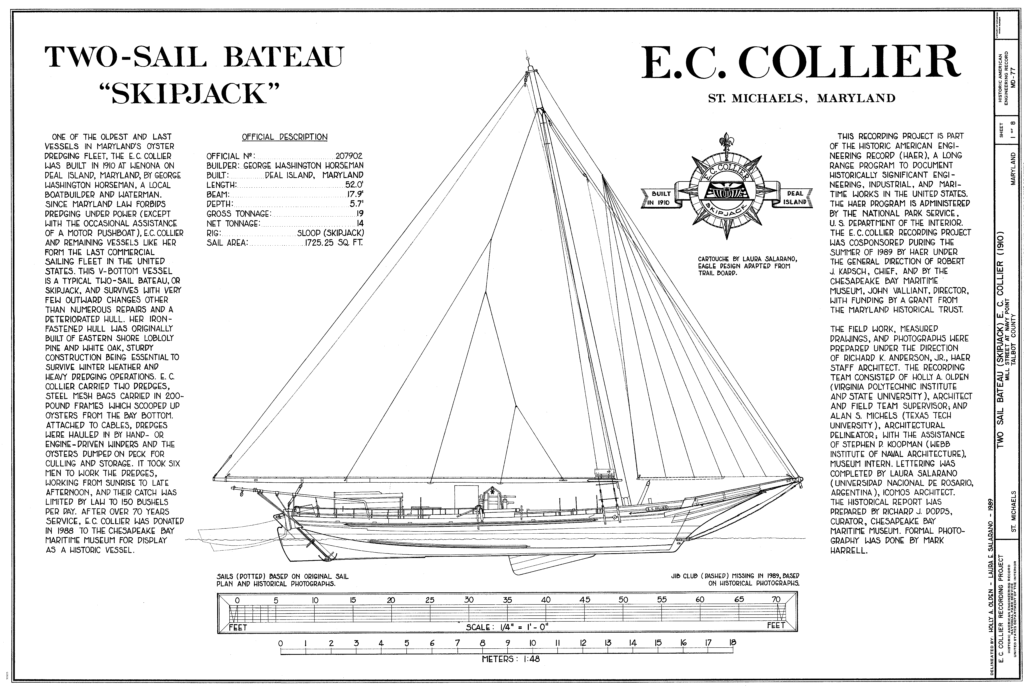
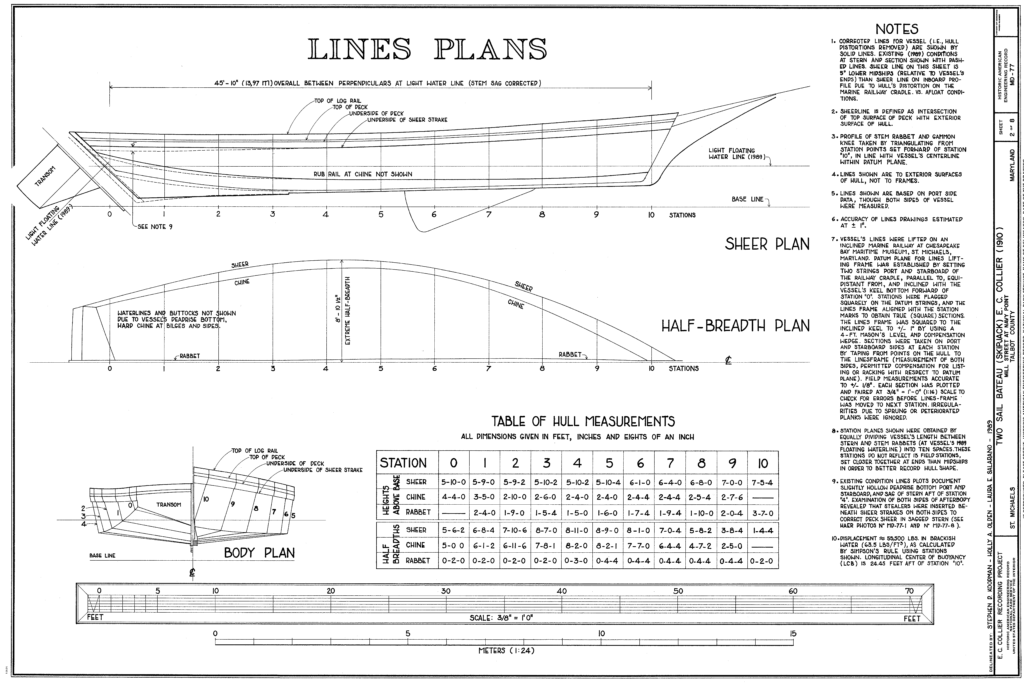
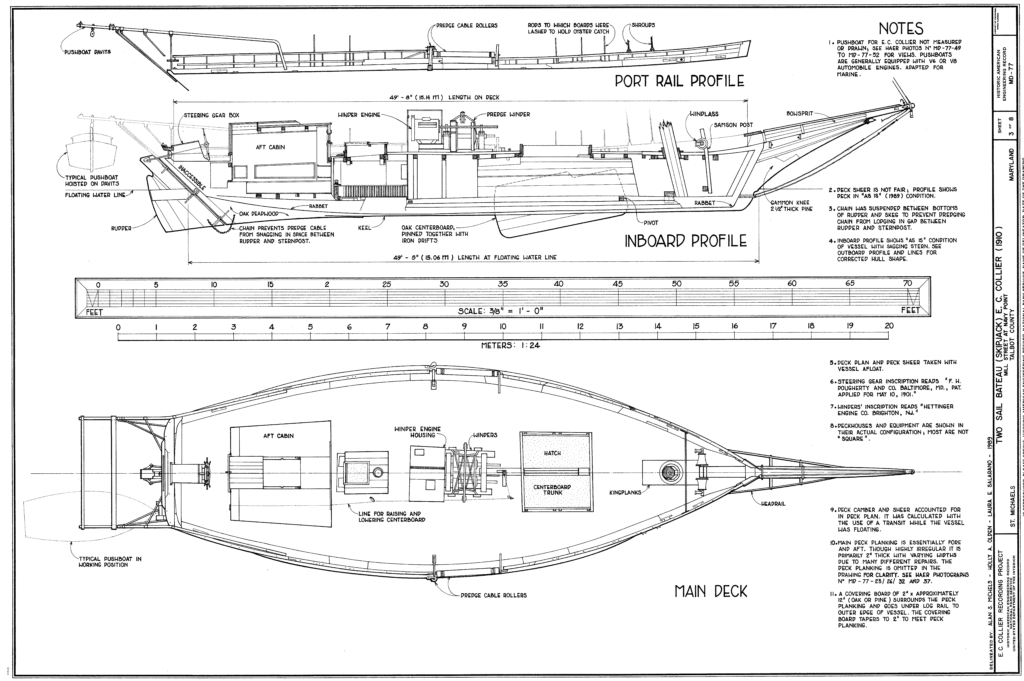
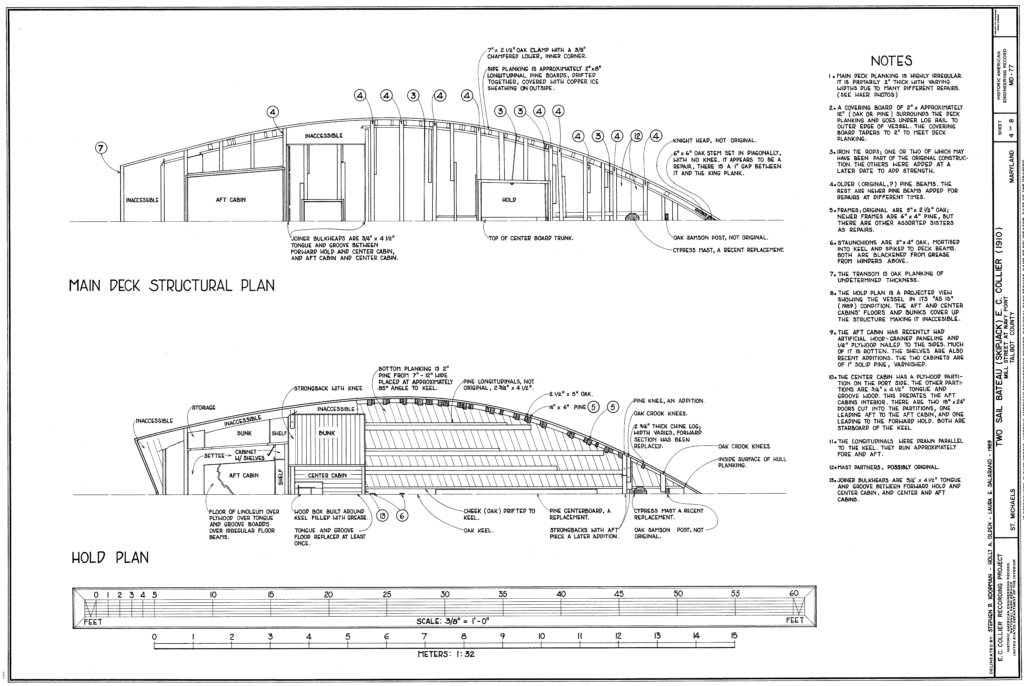
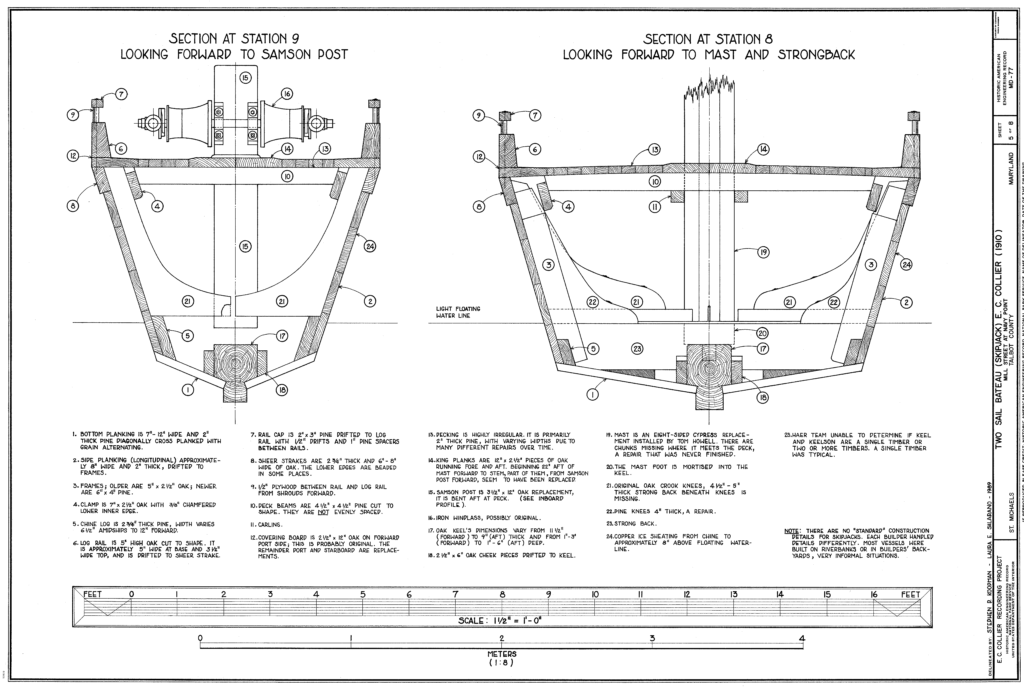
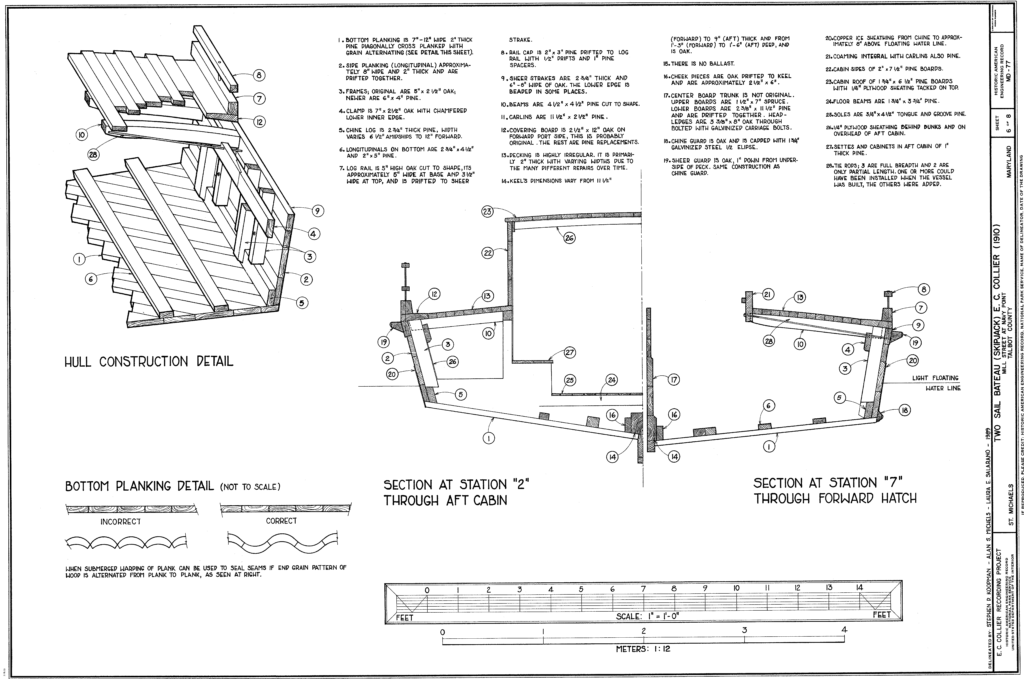
[1] This recording project is part of the Historic American Engineering Record, a project of the National Park Service. The project was cosponsored in 1989 by HAER under the direction of Robert J. Kapsch, chief, and the Chesapeake Bay Maritime Museum, John Valliant, director. The project was funded by a grant from the Maryland Historical Trust.
The field work, measured drawings and photographs were prepared under the direction of Richard K. Anderson, Jr., HAER chief architect. The recording team was Holly A. Olden, Virginia Polytechnic Institute, architect and field team supervisor; Alan S. Michels, Texas Tech University, architectural delineator; Stephen D. Koopman, Webb Institute of Naval Architecture, museum intern. Lettering was done by Laura Salarano, Universidad Nacional De Rosario, Argentina, ICOMOS architect. The historical report was prepared by Richard J. Dodds, curator of the Chesapeake Bay Maritime Museum. Photography was done by Mark Harrell. More information can be found in the Library of Congress, HAER call letter MD-77.